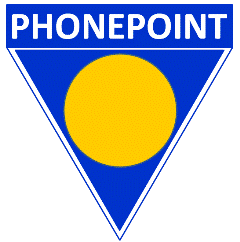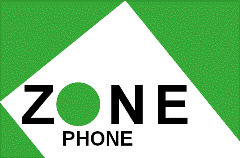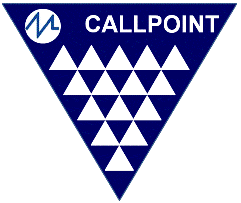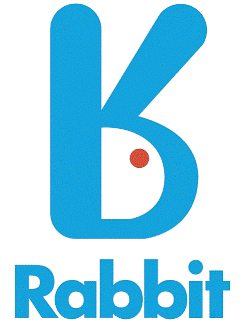Telepoint Services
On the 28th July 1988, Lord Young, Secretary of State for Trade and Industry within the then Conservative Government announced the issuing of up to four licences to run Telepoint services within the UK. A Telepoint service was seen as providing an alternative form of mobile communications that was cheaper for the operators to deploy than a mobile phone network and consequently, would offer customers a more affordable product. The concept of the Telepoint service is that customers have a cordless telephone and base station unit in their homes. However, when outside that same phone can be used so long as it was within range of a Telepoint access point. These access points were to be located in public spaces such as the high street, railway stations, and motorway services. When in range of an access point customers could use their phones to make calls but, because the system was not a fully fledged mobile network with handset tracking, it was impossible for customers to receive calls whilst outside. One solution to this was to provide a voice mail answer service that allowed people to leave messages for the person being called when they were away from their homes. The Telepoint service therefore was positioned part way between on the one hand, a mobile phone and on the other, a telephone kiosk. Lord Young did indeed describe Telepoint as, like having a phone box in your pocket!
In January 1989 the UK Government announced that from eleven applications, four licences would be awarded to run Telepoint services for the next 12 years. These were:
Ferranti (Zonephone)
Philips, Barclays bank, and Shell (BYPS Communications)
STC, British Telecom, France Telecom and Nynex (Phonepoint)
Motorola, Shaye Communications and Mercury Communications (Callpoint)
All four licence holders were required to work towards a standardised system that would allow customers to roam from one Telepoint service to another. This so called Common Air Interface was realised in the UK as the CT2 standard for digital cordless communications which was first published in May 1989. It operates within the frequency band of 864.1 to 868.1MHz with a mean output power of 10mW resulting in an operating range between phone and base station/access point of typically 150m. Whilst there was agreement to move towards a common Telepoint standard by December 1990, many manufacturers had already been developing their own systems and so chose to try and capitalise on this emerging market by initially launching their Telepoint services based on these incompatible and proprietary solutions. The intention was to move over to the CT2 standard once this had been fully ratified by the appropriate European standards bodies. Whilst CT2 was the first standard for digital cordless communications, it was not in fact fully adopted across Europe but did prove considerably more popular in the Far East. It was succeeded in 1991 by the Digital European Cordless Telecommunications (DECT) standard.
The UK's four Telepoint services began operations in 1989 but with mixed results.
Phonepoint access point sign (reproduction) |
PhonepointPhonepoint became the world's first Telepoint service when it was launched in August 1989. A handset cost £245 and a base station £195. Customers also had to pay a £20 connection charge with a monthly rental of £8. Calls were charged per minute at between 10p and 55p off-peak and between 13p and 85p at all other times. The service launched in London and the South East with plans to provide nationwide coverage within a year. Phonepoint access points were identified by striking blue and yellow signs, a reproduction of which is shown here. Whilst Phonepoint was led by BT, the second largest shareholder was STC who developed and manufactured the handsets. In September 1991 Phonepoint tried to attract customers from Callpoint and Zonephone, both of which had ceased operations, by offering Phonepoint handsets at reduced prices and by seeking to replace Callpoint and Zonepoint base stations in public areas with Phonepoint base stations. Sadly, this attempt was not met with success and Phonepoint was formally closed on 1st October 1991 with less than 1,000 registered subscribers and 3,300 base stations deployed. |
Zonephone access point sign (reproduction) |
ZonephoneFerranti's Zonepoint was the UK's second Telepoint service, launching in October 1989. Initially the service was only available within a zone defined by London's M25 orbital motorway. The handsets had been developed in partnership with Cambridge based PA Technology and retailed at £200 with an additional cost of £235 for a base station. The marketing literature promoted the performance of a Ferranti Zonephone over that of an analogue mobile phone as being similar to the difference between a vinyl LP and a Compact Disc! Unfortunately, having failed to secure significant numbers of subscribers, Zonephone ceased in July 1991. |
Callpoint access point sign |
CallpointCallpoint launched on 4th December 1989 with claims to create a nationwide service within 4 months with 2,000 lines installed and working and with base stations installed in all towns with a population of over 100,000 with additional base stations on motorways, trunk roads, railway stations and road-side service stations by the end of 1990. Calls were charged at 10p per minute during evenings and weekends, 16p per minute during weekday afternoons and 20p per minute at other peak times. The Shaye Communications designed handsets cost £200 with a connection charge of £20 and a monthly rental of £8. At the time of launch, 36 base stations were operational with a further 500 due to follow shortly afterwards. Handsets had, in the first instance, to be bought directly from Mercury Callpoint but plans were in place to distribute them through high-street stores. Each access point was identified by a distinctive sign that was a large upside down blue and white triangle; an attempt at reproducing this sign is shown here. Callpoint ceased operation in June 1991. |
Rabbit access point sign
Rabbit handset and base station
Rabbit datakey and pager
Rabbit sign on the Euston Square Hotel, London (December 2010). Now sadly removed. Rabbit phone and sign re-united at Watford Junction Station (April 2011)
|
RabbitPerhaps the most famous and iconic of the UK's Telepoint services is that of Rabbit with its upside down letter R logo. The UK's first three Telepoint services, Phonepoint, Zonepoint and Callpoint, had all launched in 1989 but had all closed down due to poor subscriber numbers by the end of 1991. At this time, the fourth Telepoint provider, BYPS Communications, had yet to launch their service. In February 1991, Hutchison Telecom (part of Hong Kong's Hutchison Whampoa Group) negotiated a controlling stake in BYPS. Of the three original partners, only Barclays remained but reduced their stake to 5%. Having taken over the BYPS Telepoint licence, Hutchison rebranded the service as Rabbit and chose to delay any launch until handsets became available that fully complied with the CT2 digital cordless standard. Consequently, the Rabbit service did not launch until May 1992 when the service was inaugurated in Manchester City Centre. Having witnessed the failure of three Telepoint services, many business analysts believed that Rabbit was doomed from the start. However, Hutchison Telecom was confident that a niche market existed within the UK for a pocket phone that offered a cheaper alternative to the mobile phone. They also believed that delaying a launch until CT2 equipment had been fully developed would allow them to succeed where others had failed with their proprietary and incompatible products. Following the launch, it was predicted that 12,000 base stations would be installed by the end of 1992 with subscribers growing to 20,000. Early signs were very promising with 1,000 subscribers signed up within the first six weeks of operation. A Rabbit handset and base station (shown on the left) retailed at £199 with a monthly subscription of £6 and calls were charged at an equivalent rate to BT telephone boxes of 10p per minute off-peak and 20p per minute peak rate. This meant that owning a Rabbit phone cost about a third to a half the price of a mobile phone. However, the inability to receive calls whilst away from home remained a key disadvantage but for an extra £5.50 per month you could subscribe to an answer and messaging service. When a caller left a message, an alert could be sent to a Rabbit pager (shown on the left is a Rabbit PG32B pager). This would provide an audible bleep, alerting you to the fact that someone had left a message. You could then access this message the next time you brought your Rabbit phone within range of an access point. A further development of the Rabbit handset was planned for release in the summer of 1993 that combined a Telepoint phone and pager integrated into the same handset. Also shown on the left is a promotional key ring that was branded as a Rabbit datakey. Within it was a paper memo pad that allowed you to record important pin numbers and security codes but in a way that others would not be able to read. Following its launch in Manchester, the plan was for the service to be rolled out in London and the South East by October 1992, the Midlands in November and then country wide by the end of the year. The claim was that when fully deployed, customers within city centres would never be more than 2 minutes away from a Rabbit access point. With the adoption of Telepoint services in other countries, Rabbit customers would also soon be able to use their phones in Holland, France, Hong Kong and Singapore! Regrettably, Rabbit did ultimately go the same way as Phonepoint, Zonephone and Callpoint and it closed on 31st December 1993 having attracted only 9,000 subscribers nationally, measured against a prediction of 50,000. Hutchison reported that they had set aside £122 million to cover the costs of closing down their Rabbit service. Existing customers were offered to trade in their Rabbit handsets in return for a new Vodafone or Cellnet mobile phone with free connection and a subsidised subscription for one year or £100 in cash and a free handset and access to the soon to be launched, Hutchison Telecom GSM mobile phone network, Orange. The closure of Rabbit only twenty months after its launch brought to
an end the Telepoint services within the UK. However, evidence of this
technology has not completely disappeared from view. If you look very
carefully then it is still possible to see the occasional Rabbit logo
adoring buildings and railway stations - see the two examples on the left. |
The Telepoint story in the UK is ultimately one of failure driven in the first instance by incompatible systems and limited supplies of handsets, and latterly by competition from the launch of the second generation digital mobile phone networks based on GSM. Rabbit was by far the most successful of the four Telepoint services but ultimately, it failed to secure a sufficiently large subscriber base when faced with growing mobile phone ownership, competitive pricing from services such as those offered by Mercury one2one and the challenge from a superior technology that could both make and receive calls whilst on the move. When the Rabbit service closed in December 1993 with only 9,000 subscribers, Vodafone in comparison had over 700,000 customers.
However, the picture in the Far East was quite different. In January 1992 Singapore Telecom launched their CT2 based Telepoint service and sold 1,500 handsets on the first day and secured 10,000 subscribers within the first month of operation. Similarly Hutchison's Telepoint service launched in Hong Kong attracted 70,000 subscribers and was profitable.
Maybe Telepoint was simply a technology that was launched and matured too late being unable to compete with the massive investment and development that was targeted towards the mobile phone. However, the concept of access points on the high street and in railway stations has not gone away but today, those access points connect us to the Internet through what we now call WiFi hotspots.
Click here to go back to the index page










